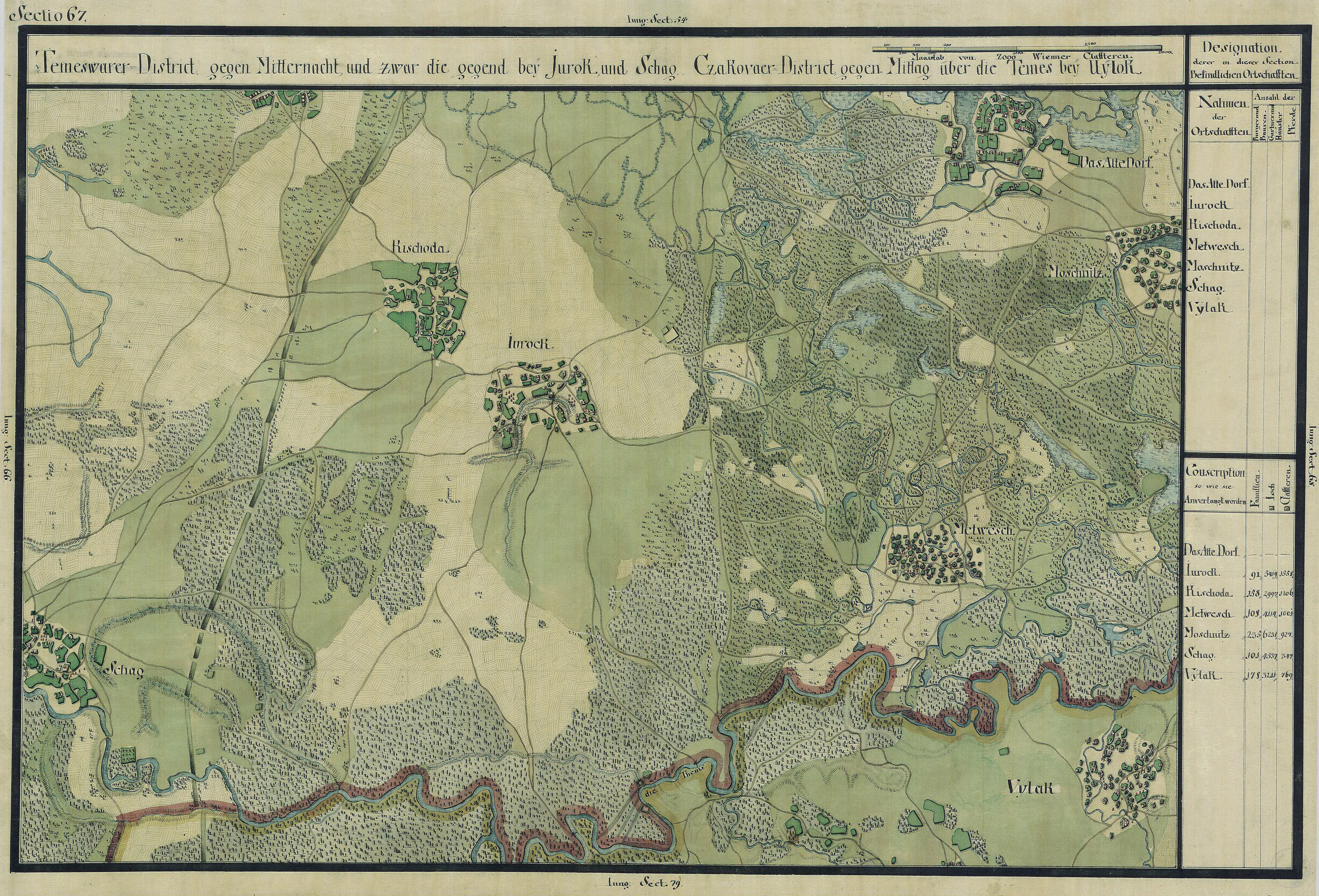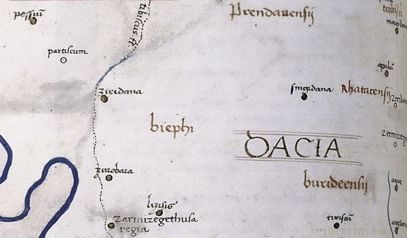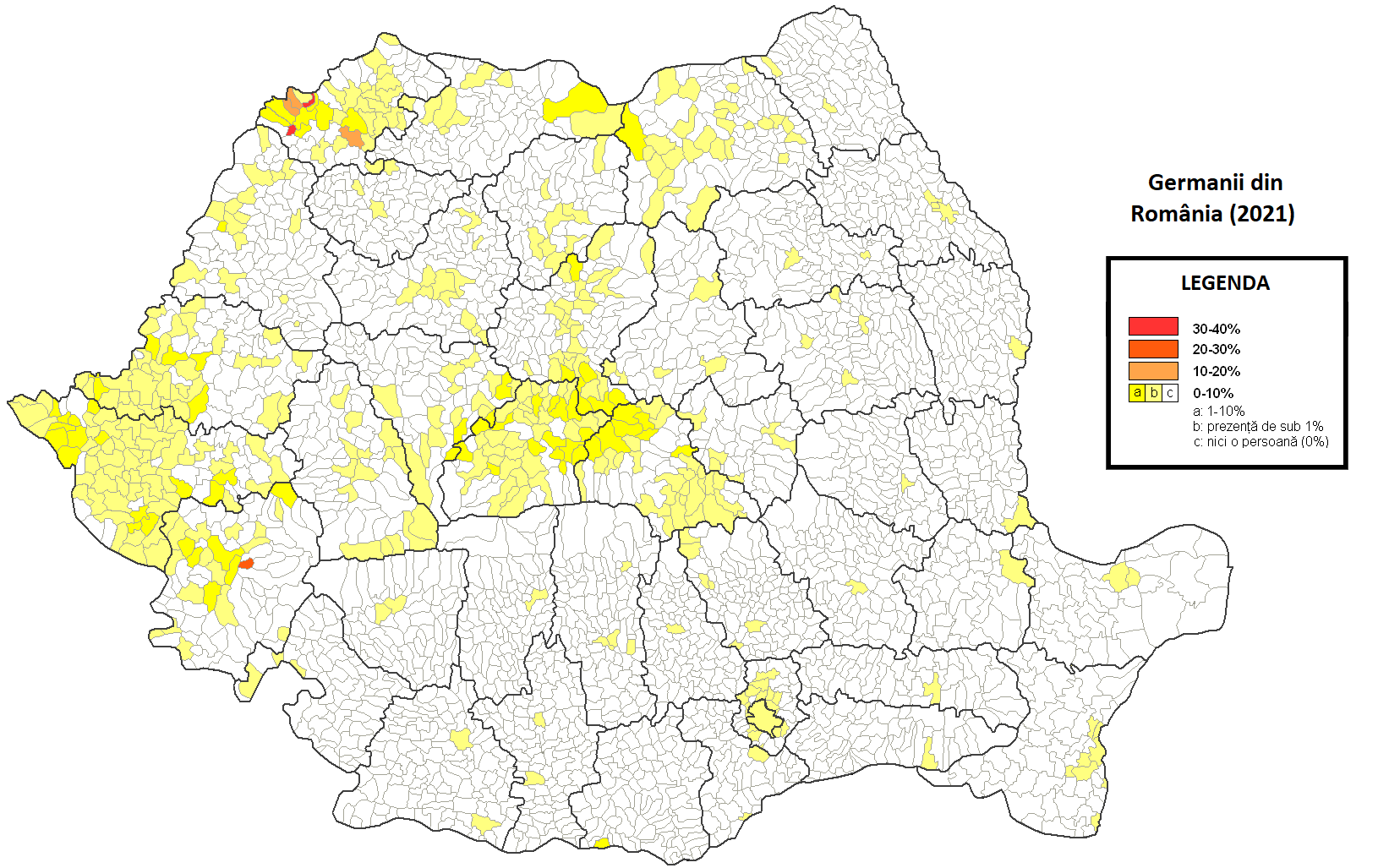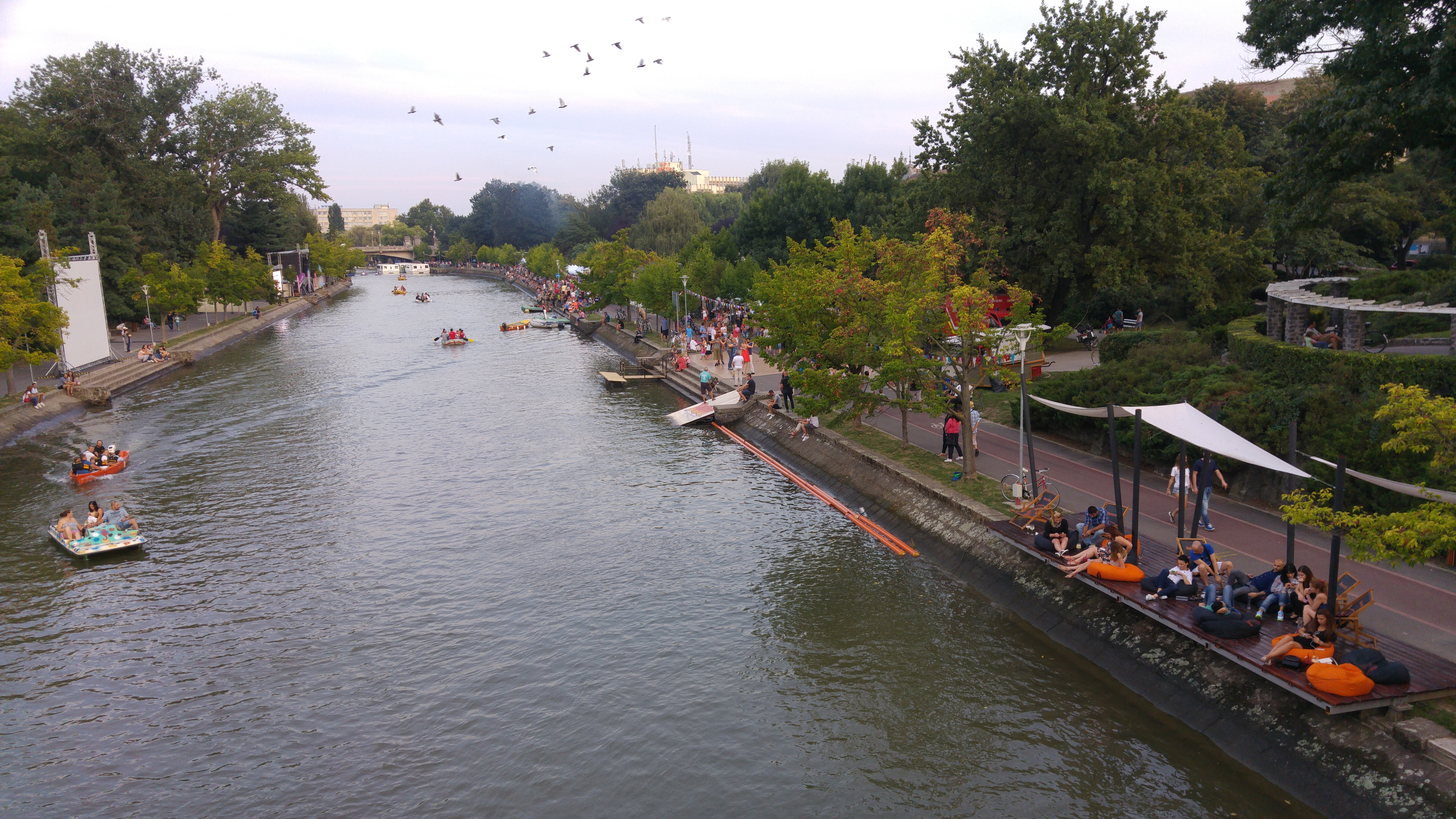|
Parța
Parța (; ; ) is a commune in Timiș County, Romania. It is composed of a single village, Parța, and was part of Șag commune until 2004. History Parța was first documented in 1334 as ''Parkas'', and in 1417 the settlement of ''Maraz'', with town (market) status, is recorded near Parța. At the conscription (census) carried out in 1717 by the Austrians, after the conquest of Banat, the settlement had 84 houses and was called ''Paraz''. In 1878, during the regularization of the Timiș River, traces of a Neolithic settlement on three levels were discovered here, in which pottery specific to the Vinča culture was found. The first systematic excavations of the site began in 1931 and were completed only in 1985. Over the course of five decades, the following have been discovered here: two Neolithic sanctuaries, one with monumental statues, relocated and restored in Timișoara's National Museum of Banat, another overlapping the first one from which only one altar has been preserv ... [...More Info...] [...Related Items...] OR: [Wikipedia] [Google] [Baidu] |
Vinča Culture
The Vinča culture , also known as Turdaș culture, Turdaș–Vinča culture or Vinča-Turdaș culture, is a Neolithic archaeological culture of Southeast Europe, dated to the period 5400–4500 BC. It is named for its type site, Vinča-Belo Brdo, a large tell settlement discovered by Serbian archaeologist Miloje Vasić in 1908. As with other cultures, it is mainly distinguished by its settlement pattern and ritual behaviour. It was particularly noted for its distinctive dark-burnished pottery. Farming technology first introduced to the region during the First Temperate Neolithic was developed further by the Vinča culture. This fuelled a population boom that produced some of the largest settlements in prehistoric Europe. These settlements maintained a high degree of cultural uniformity through the long-distance exchange of ritual items, but were probably not politically unified. Various styles of zoomorphic and anthropomorphic figurines were hallmarks of the culture, as ... [...More Info...] [...Related Items...] OR: [Wikipedia] [Google] [Baidu] |
Șag
Șag (; ) is a commune in Timiș County, Romania. It is composed of a single village, Șag; Parța village broke off as a separate commune in 2004. Geography Șag is a plain commune, located in the Banat Plain, in the periurban area of Timișoara, away. Șag is situated on the right bank of the Timiș River. On the territory of Șag commune, the Timiș River is dammed on both banks. Șag borders Timișoara to the north, Sânmihaiu Român to the northwest, Parța to the southwest, Pădureni to the south and Giroc to the east. Due to its position, Șag commune is part of the transitional continental climate with influences of the sub-Mediterranean climate, and the diversity and irregularity of the atmospheric processes is characteristic of it. The characteristic vegetation is that of the forest-steppe and is influenced by the vicinity of the southern European geobotanical province. History Prehistory According to the archeological researches and some objects found in t ... [...More Info...] [...Related Items...] OR: [Wikipedia] [Google] [Baidu] |
Timiș (river)
The Timiș or Tamiš (, , , ) is a river that flows through the Banat region of Romania and Serbia and joins the Danube near Pančevo, in northern Serbia. Due to its position in the region, it has been labeled as the "spine of the Banat". Name In Classical antiquity, antiquity, the river was known as ''Tibiscus'' (in Latin) and ''Tibisis'' (Θίβισις in ancient Greek), and as ''Timisis'' in De Administrando Imperio; in addition, Edward Gibbon referred to it as the ''Teyss''. ''The Romans, who traversed the plains of Hungary, suppose that they passed several navigable rivers, either in canoes or portable boats; but there is reason to suspect that the winding stream of the Teyss, or Tibiscus, might present itself in different places under different names.'' Geography The Drainage basin, drainage area covers , of which in Romania. With the Danube, the Timis belongs to the Black Sea drainage basin. The river flows through Romania for , and through Serbia. Its average di ... [...More Info...] [...Related Items...] OR: [Wikipedia] [Google] [Baidu] |
Serbs Of Romania
The Serbs of Romania (, , ) are a recognized ethnic minority numbering 18,076 people (0.1%) according to the 2011 census. The community is concentrated in western Romania, in the Romanian part of the Banat region (divided with Serbia), where they constitute the absolute majority in two communes and the relative majority in one other. The community represents the oldest Serbian community outside of Serbia. History Historical background Slavic presence is attested in Romania since the Early Middle Ages. The Avar Khaganate was the dominant power of the Carpathian Basin between around 567 and 803. Most historians agree that Slavs and Bulgars, together with the remnants of the Avars, and possibly with Vlachs, inhabited the Banat region after the fall of the khaganate. Place names of Slavic origin recorded already in the Middle Ages show the early presence of a Slavic-speaking population. Early modern period From the late 14th- to the beginning of the 16th century a large number of ... [...More Info...] [...Related Items...] OR: [Wikipedia] [Google] [Baidu] |
Germans Of Romania
The Germans of Romania (; ; ) represent one of the most significant historical Minorities of Romania, ethnic minorities of Romania from the Modern era, modern period onwards. Throughout Kingdom of Romania#The interbellum years, the interwar period, the total number of ethnic Germans in the country amounted to as many as 800,000 (according to some sources and estimates dating to 1939, just on the verge of World War II), a figure which has subsequently drastically fallen to 36,000 (according to the 2011 Romanian census, 2011 census) and dropped even more to 22,900 (as per the 2021 Romanian census, postponed one year because of the COVID-19 pandemic in Romania, COVID-19 pandemic and conducted in 2022). Following the decreasing trend of the overall population of Romania, the German community of the country is expected to continue shrinking in numbers as well, as it has already been officially reported by the partial results of the 2021 Romanian census, 2021 census. Overview and ... [...More Info...] [...Related Items...] OR: [Wikipedia] [Google] [Baidu] |
Museum Of Banat
The National Museum of Banat (; abbreviated MNaB) is a museum in Timișoara, Romania, headquartered in Huniade Castle. It was founded in 1872 by the Society of History and Archeology of Banat () on the initiative of the prefect of the then Temes County . It hosts the largest collection of archeological objects in Banat. The ground floor houses the 6,200-year-old Parța Neolithic Sanctuary. The museum includes departments for archeology, history and natural sciences. The museum also has a laboratory for conservation and preservation of objects of cultural heritage and history. History The establishment of the Society of History and Archeology of Banat on 25 July 1872 on the initiative of Prefect laid the foundations of the Museum of Banat. The first exhibits were initially housed in a room in the Palace of the Bishopric of Cenad and consisted of donations, adventitious archeological discoveries and acquisitions. In 1876, with the support of the prefect of Temes County, the Society ... [...More Info...] [...Related Items...] OR: [Wikipedia] [Google] [Baidu] |
Timișoara
Timișoara (, , ; , also or ; ; ; see #Etymology, other names) is the capital city of Timiș County, Banat, and the main economic, social and cultural center in Western Romania. Located on the Bega (Tisza), Bega River, Timișoara is considered the informal capital city of the historical Banat region. From 1848 to 1860 it was the capital of the Serbian Vojvodina and the Voivodeship of Serbia and Banat of Temeschwar. With 250,849 inhabitants at the 2021 Romanian census, 2021 census, Timișoara is the country's List of cities and towns in Romania, fifth most populous city. It is home to around 400,000 inhabitants in its Timișoara metropolitan area, metropolitan area, while the Timișoara–Arad metropolis concentrates more than 70% of the population of Timiș and Arad County, Arad counties. Timișoara is a multicultural city, home to 21 ethnic groups and 18 religious denominations. Historically, the most numerous were the Banat Swabians, Swabian Germans, Jews and Hungarians, who ... [...More Info...] [...Related Items...] OR: [Wikipedia] [Google] [Baidu] |
Timiș County
Timiș () is a county (''județ'') of western Romania on the border with Hungary and Serbia, in the historical regions of Romania, historical region of Banat, with the county seat at Timișoara. It is the westernmost and the largest county in Romania in terms of land area. The county is also part of the Danube–Criș–Mureș–Tisa Euroregion. Name The name of the county comes from the Timiș (river), Timiș River, known in Roman antiquity as ''Tibisis'' or ''Tibiscus''. According to Lajos Kiss' etymological dictionary, the name of the river probably comes from the Dacian language: ''thibh-isjo'' ("marshy"). In Hungarian language, Hungarian, Timiș County is known as ''Temes megye'', in German language, German as ''Kreis Temesch'', in Serbian language, Serbian as Тамишки округ/''Tamiški okrug'', in Ukrainian language, Ukrainian as Тімішський повіт, and in Banat Bulgarian dialect, Banat Bulgarian as ''okrug Timiš''. Geography Timiș is the lar ... [...More Info...] [...Related Items...] OR: [Wikipedia] [Google] [Baidu] |
Timiș River
The Timiș or Tamiš (, , , ) is a river that flows through the Banat region of Romania and Serbia and joins the Danube near Pančevo, in northern Serbia. Due to its position in the region, it has been labeled as the "spine of the Banat". Name In antiquity, the river was known as ''Tibiscus'' (in Latin) and ''Tibisis'' (Θίβισις in ancient Greek), and as ''Timisis'' in De Administrando Imperio; in addition, Edward Gibbon referred to it as the ''Teyss''. ''The Romans, who traversed the plains of Hungary, suppose that they passed several navigable rivers, either in canoes or portable boats; but there is reason to suspect that the winding stream of the Teyss, or Tibiscus, might present itself in different places under different names.'' Geography The drainage area covers , of which in Romania. With the Danube, the Timis belongs to the Black Sea drainage basin. The river flows through Romania for , and through Serbia. Its average discharge at the mouth is . The sour ... [...More Info...] [...Related Items...] OR: [Wikipedia] [Google] [Baidu] |
Catholic Church In Romania
Romanian Catholics, like Catholics elsewhere, are members of the Catholic Church under the spiritual leadership of the Pope and Roman Curia, Curia in Rome. The administration for the local Latin Church is centered in Bucharest, and comprises two archdioceses and four other dioceses. It is the second largest Romanian denomination after the Romanian Orthodox Church, and one of the 18 state-recognized religions. The 2022 census indicated that there were 741,504 Romanian citizens adhering to the Latin Church (3.89% of the population). Of these, the largest groups were Hungarian minority in Romania, Hungarians (54.7% or 405,212, including Székelys, Székely and Csángó), Romanians (38.2% or 283,092), Germans of Romania, Germans (1.7% or 12,495) and Slovaks of Romania, Slovaks (0.9% or 6,853)."Biserica Romano-Catolică" , at t ... [...More Info...] [...Related Items...] OR: [Wikipedia] [Google] [Baidu] |
Serbian Orthodox Church
The Serbian Orthodox Church ( sr-Cyrl-Latn, Српска православна црква, Srpska pravoslavna crkva) is one of the autocephalous (ecclesiastically independent) Eastern Orthodoxy, Eastern Orthodox Eastern Orthodox Church#Constituencies, Christian churches. The majority of the population in Serbia, Montenegro and Republika Srpska of Bosnia and Herzegovina are Baptism, baptised members of the Serbian Orthodox Church. It is organized into metropolis (religious jurisdiction), metropolitanates and eparchies, located primarily in Serbia, Bosnia and Herzegovina, Montenegro, and Croatia. Other congregations are located in the Serb diaspora. The Serbian Patriarch serves as first among equals in his church. The current patriarch is Porfirije, Serbian Patriarch, Porfirije, enthroned on 19 February 2021. The Church achieved Autocephaly, autocephalous status in 1219, under the leadership of Saint Sava, becoming the independent Archbishopric of Žiča. Its status was elevated ... [...More Info...] [...Related Items...] OR: [Wikipedia] [Google] [Baidu] |
2021 Romanian Census
The 2021 Romanian census () was a census held in Romania between 1 February and 31 July 2022, with the reference day for the census data set at 1 December 2021. The census was supposed to be done in 2021, but it was postponed due to the COVID-19 pandemic in Romania in order to avoid census takers from getting infected when coming into contact with ill or quarantined people. It was the first census held in Romania in which data was collected online, something that had support among Romanian youth. The census was divided into three phases: one in which personal data of the Romanian population was collected from various sites; another in which the population was to complete more precise data such as religion, in which town halls would help the natives of rural areas to answer the census; and a third one in which census takers would go to the homes and households of those who did not register their data online. Data for this census was planned not to be collected on paper, but inste ... [...More Info...] [...Related Items...] OR: [Wikipedia] [Google] [Baidu] |







